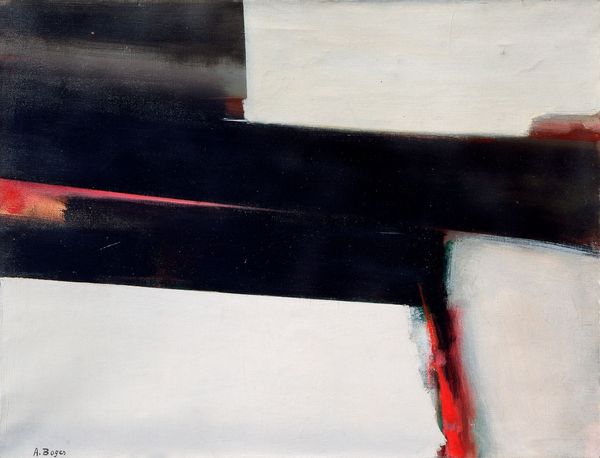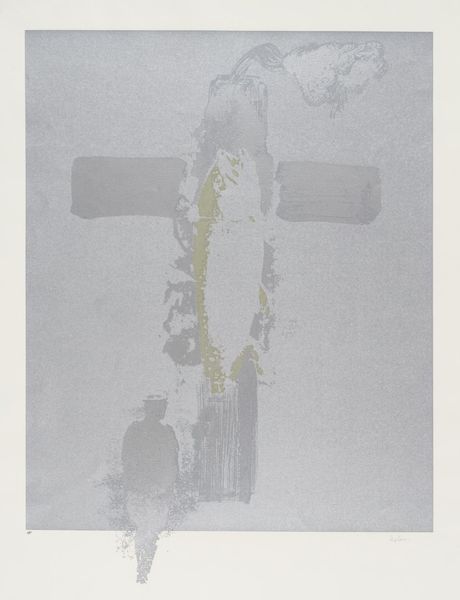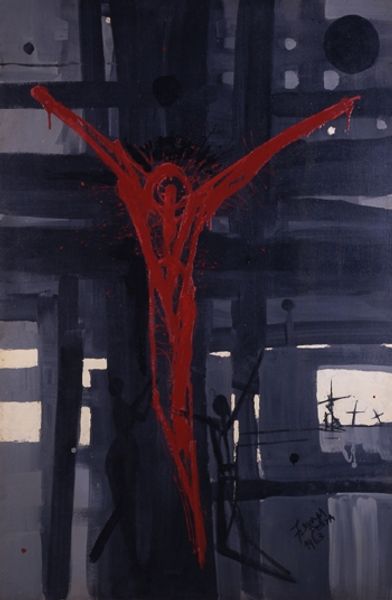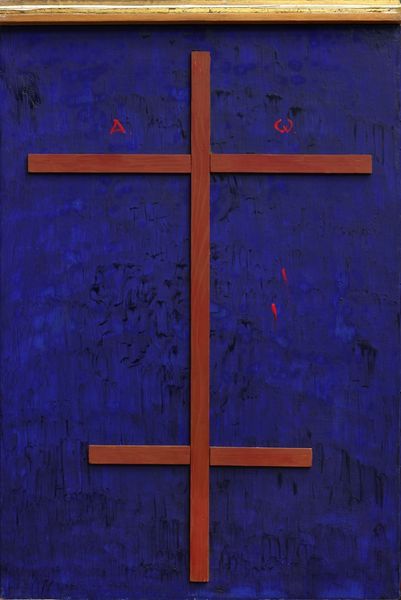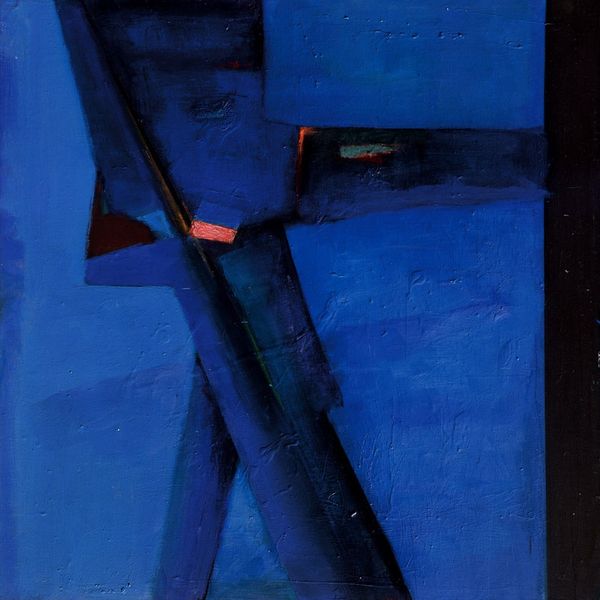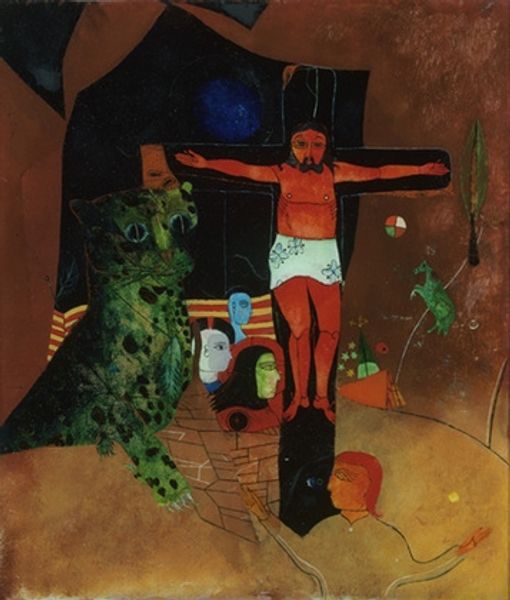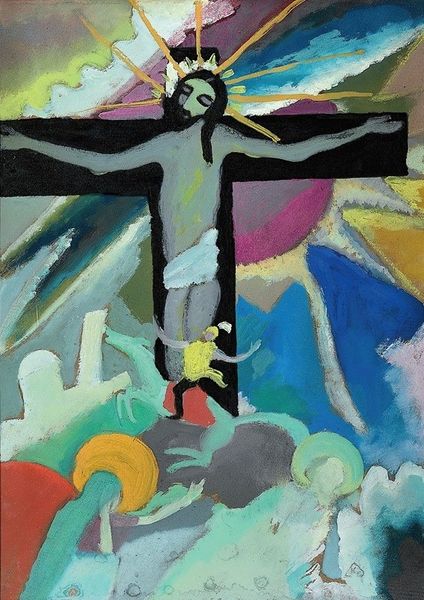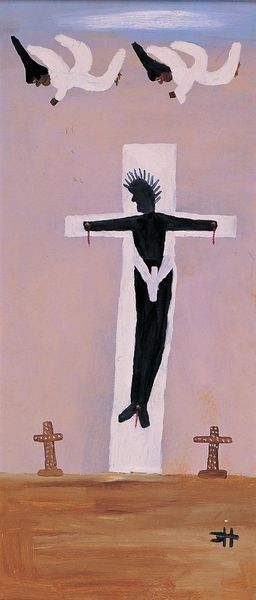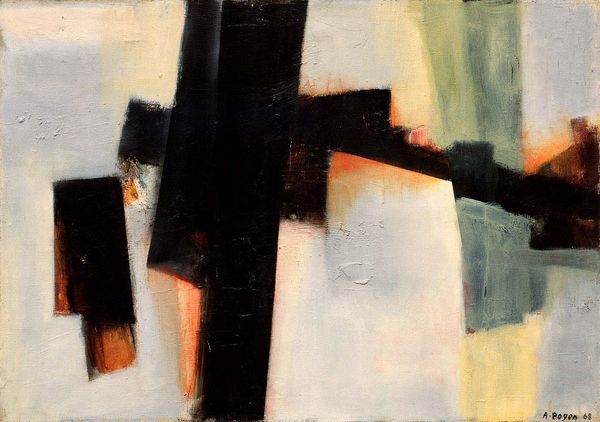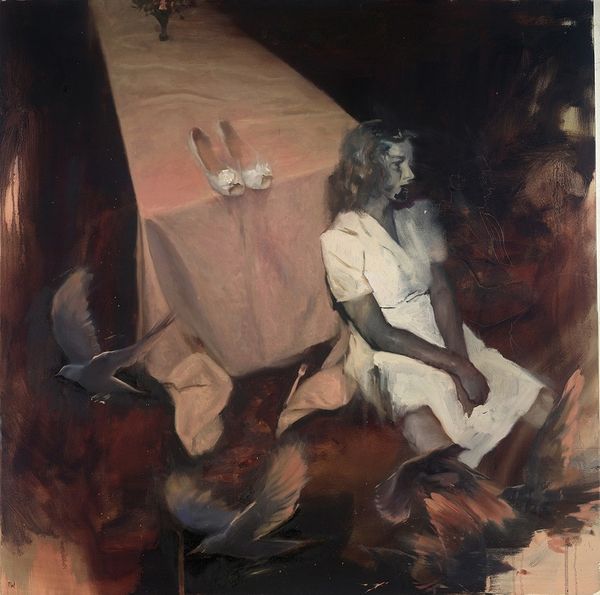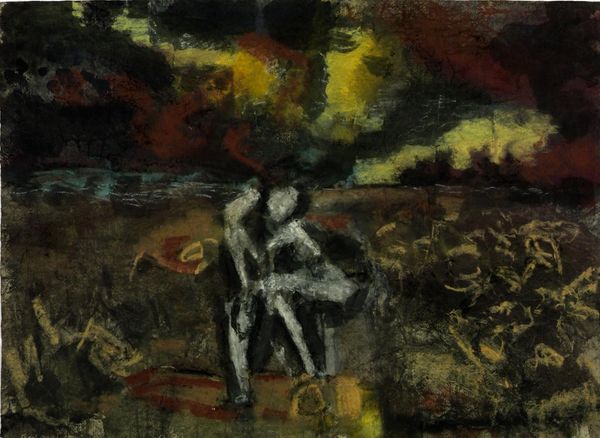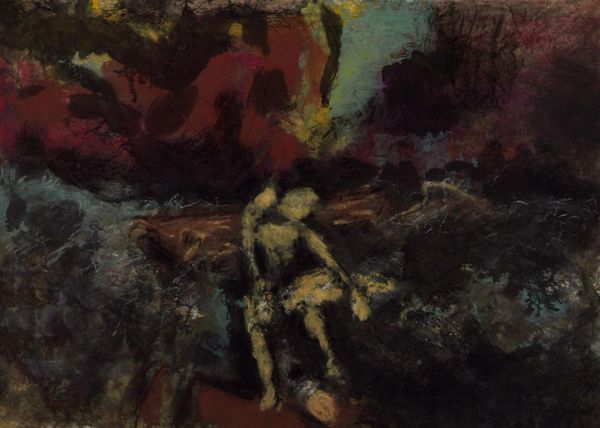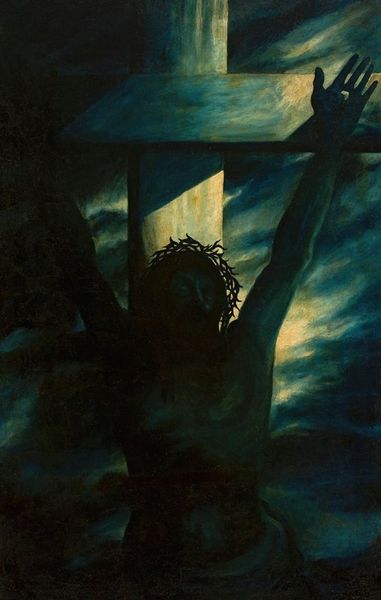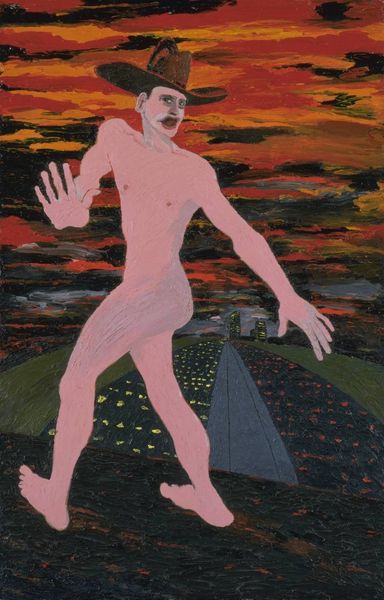
Dimensions: support: 2147 x 1830 mm
Copyright: © The estate of Craigie Aitchison | CC-BY-NC-ND 4.0 DEED, Photo: Tate
Curator: Craigie Aitchison’s "Crucifixion 9," part of the Tate collection, presents a poignant and stripped-down depiction of the crucifixion. Editor: My first impression is one of stark simplicity; the painting’s mood is defined by its subdued color palette and minimalist forms. Curator: Aitchison, throughout his career, revisited this theme, imbuing it with personal and often unconventional symbolism that seems to speak to the marginalization of queer identity within religious contexts. Editor: The painting's formal qualities, such as its flat planes of color and the almost naive rendering of the figures, create a sense of vulnerability and raw emotion, amplifying the spiritual experience. Curator: Absolutely, and considering Aitchison’s identity as a gay man in mid-20th century Britain, the image can be read as a powerful statement about faith, suffering, and the search for acceptance. Editor: The simplicity allows the viewer to focus on the essential elements, reducing the narrative to its most elemental and affecting forms. Curator: Reflecting on this, I’m struck by the painting’s quiet yet powerful commentary on the intersection of personal identity and religious narrative. Editor: Indeed, the austere forms heighten the emotional impact, resonating deeply with the viewer on a formal level.
Comments
tate 6 months ago
⋮
http://www.tate.org.uk/art/artworks/aitchison-crucifixion-9-t04942
Join the conversation
Join millions of artists and users on Artera today and experience the ultimate creative platform.
tate 6 months ago
⋮
Aitchison has been painting the subject of the Crucifixion all his professional life. His first one man show in 1958 contained a small painting of the crucified Christ attended by two angels, with a landscape background divided, as here, into coloured bands. Aitchison takes the subject of the Crucifixion, already loaded with associations, ideas and meanings, and recharges it with his own deep and intense emotions by means of shape and colour. Sometimes the figure of Christ has arms but usually he is armless, as in this picture. Aitchison has said 'Everybody knows who he is. He doesn't need arms'. The Crucifixion is set against a hill called Goat Fell, on the Isle of Arran, a childhood holiday place. Gallery label, September 2004
